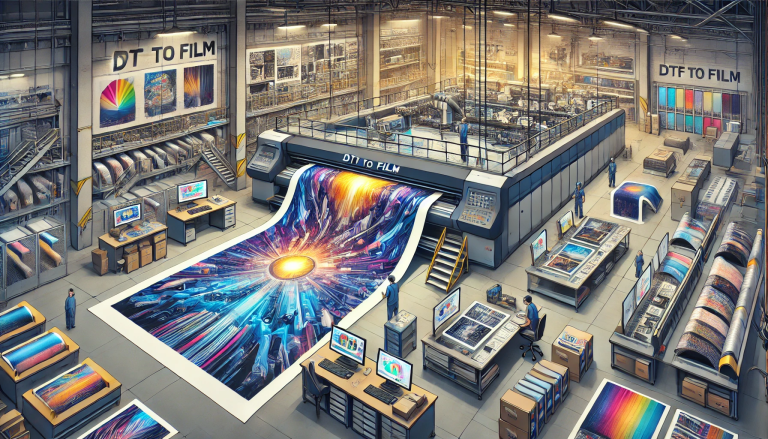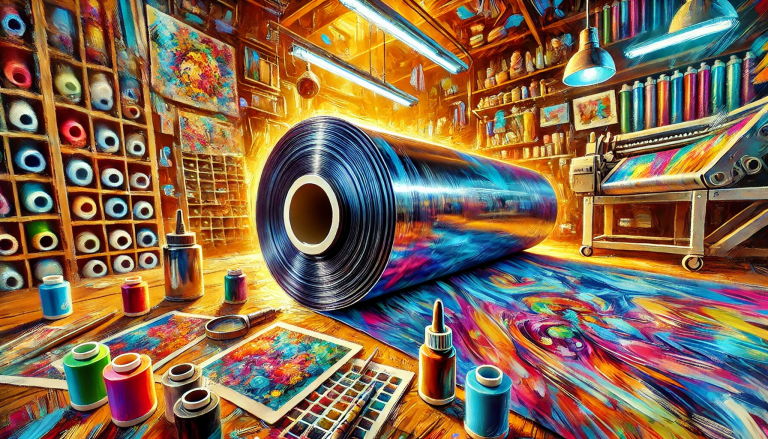“DTF PET Film Roll: The Ultimate Protection for Your Prints!” -MAXDTF- DTF Film A3 Factory, DTF A3 sheet Manufacturer, Made in China
Introduction
PET Film roll for DTF stands for Direct-to-Film printing. It is a type of printing technology that uses a special type of film to transfer an image directly onto a substrate. This technology is used in a variety of industries, including the printing of labels, signs, and other graphics. It is a cost-effective and efficient way to produce high-quality prints with a wide range of colors and textures. This article will provide an overview of the technology, its advantages, and its applications.
Comparing the Cost of PET Film Roll for DTF Printing to Other Printing Methods
When it comes to printing, there are a variety of methods available to choose from. One of the most popular methods is Direct Film (DTF) printing, which uses a PET film roll to transfer an image onto a substrate. This method is often used for printing on fabrics, plastics, and other materials. While DTF printing is a cost-effective option, it is important to compare the cost of the PET film roll to other printing methods to determine which is the most cost-effective for your project.
The cost of a PET film roll for DTF printing depends on the size and type of film used. Generally, the larger the roll, the more expensive it will be. Additionally, the type of film used will also affect the cost. For example, a PET film roll with a higher resolution will cost more than a lower-resolution film.
When comparing the cost of a PET film roll for DTF printing to other printing methods, it is important to consider the cost of the substrate as well. For example, if you are printing on fabric, the cost of the fabric will need to be taken into account. Additionally, the cost of inks and other materials used in the printing process should also be considered.
In general, DTF printing is a cost-effective option for many projects. However, it is important to compare the cost of the PET film roll to other printing methods to ensure that you are getting the best value for your money. By taking into account the cost of the film, substrate, and other materials, you can make an informed decision about which printing method is the most cost-effective for your project.
Tips for Getting the Best Results When Using PET Film Roll for DTF Printing
1. Choose the Right PET Film Roll: When selecting a PET film roll for DTF printing, it is important to choose one that is compatible with your printer and has the right thickness and opacity for your project. Consider the type of ink you will be using and the desired finish of your project.
- Prepare the Printer: Before you begin printing, make sure your printer is properly set up and calibrated. This includes ensuring that the print head is clean and the ink cartridges are full.
- Clean the Roll: Before loading the PET film roll into the printer, make sure to clean it with a lint-free cloth. This will help ensure that the ink adheres properly to the film.
- Load the Roll: Carefully load the PET film roll into the printer, making sure that it is properly aligned and secured.
- Adjust the Printer Settings: Depending on the type of ink you are using, you may need to adjust the printer settings to ensure the best results. This includes setting the correct resolution, color mode, and print quality.
- Print a Test Page: Before printing your project, it is a good idea to print a test page to make sure the colors and images are printed correctly.
- Allow the Ink to Dry: After printing, allow the ink to dry completely before handling the PET film roll. This will help ensure that the ink does not smudge or smear.
- Store the Roll Properly: When not in use, store the PET film roll in a cool, dry place away from direct sunlight. This will help ensure that the film does not become damaged or warped. Understanding the Different Types of PET Film Roll for DTF PrintingPolyethylene terephthalate (PET) film is a versatile material used in a variety of applications, including digital transfer film (DTF) printing. It is a strong, durable, and lightweight material that is resistant to moisture, chemicals, and abrasion. It is also easy to work with and can be printed on with a variety of inks.
When it comes to DTF printing, there are several different types of PET film rolls available. Each type has its unique characteristics and benefits, so it is important to understand the differences between them to choose the best option for your project.
The first type of PET film roll is clear PET film. This type of film is transparent and has a glossy finish. It is ideal for printing on both light and dark surfaces, as it allows for vibrant colors and sharp details. It is also resistant to scratches and fingerprints, making it a great choice for projects that require a high level of durability.
The second type of PET film roll is matte PET film. This type of film has a matte finish, which gives it a more subtle look than clear PET film. It is also more resistant to scratches and fingerprints, making it a great choice for projects that require a high level of durability.
The third type of PET film roll is white PET film. This type of film is opaque and has a matte finish. It is ideal for printing on light surfaces, as it provides a bright and vibrant look. It is also resistant to scratches and fingerprints, making it a great choice for projects that require a high level of durability.
Finally, the fourth type of PET film roll is metallic PET film. This type of film has a metallic finish, which gives it a unique and eye-catching look. It is also resistant to scratches and fingerprints, making it a great choice for projects that require a high level of durability.
No matter which type of PET film roll you choose, it is important to understand the differences between them to choose the best option for your project. Each type has its unique characteristics and benefits, so it is important to consider all of your options before making a decision.
How to Choose the Right PET Film Roll for Your DTF Printing Needs
When it comes to DTF (direct-to-film) printing, selecting the right PET film roll is essential for achieving the desired results. The right PET film roll can help you create vibrant, high-quality prints that will last for years. Here are some tips to help you choose the right PET film roll for your DTF printing needs.
First, consider the type of material you will be printing on. Different PET film rolls are designed for different types of materials, such as paper, fabric, and plastic. Make sure to select a PET film roll that is compatible with the material you will be printing on.
Second, consider the size of the PET film roll. Different sizes are available, so make sure to select a size that is appropriate for your project. If you are printing on a large surface, you may need a larger PET film roll.
Third, consider the thickness of the PET film roll. Different thicknesses are available, so make sure to select a thickness that is appropriate for your project. Thicker PET film rolls are more durable and can provide better results.
Fourth, consider the adhesive backing of the PET film roll. Different adhesives are available, so make sure to select an adhesive that is compatible with the material you will be printing on.
Finally, consider the cost of the PET film roll. Different prices are available, so make sure to select a PET film roll that fits your budget.
By following these tips, you can ensure that you select the right PET film roll for your DTF printing needs. With the right PET film roll, you can create vibrant, high-quality prints that will last for years.
Exploring the Benefits of Using PET Film Roll for DTF Printing
DTF (Direct to Film) printing is a popular method of printing that is used in a variety of industries, from advertising to packaging. It is a cost-effective and efficient way to produce high-quality prints on a variety of materials, including PET film roll. The PET film roll is a polyester-based film that is used in a variety of applications, including printing. It is a durable and versatile material that offers several benefits when used for DTF printing.
One of the primary benefits of using PET film roll for DTF printing is its durability. The PET film roll is highly resistant to tearing, abrasion, and other forms of wear and tear. This makes it an ideal choice for printing applications that require long-term durabilities, such as outdoor signage or packaging. Additionally, PET film roll is resistant to water, oil, and other liquids, making it a great choice for applications that require moisture resistance.
Another benefit of using PET film roll for DTF printing is its versatility. PET film rolls can be used to print on a variety of surfaces, including paper, cardboard, plastic, and metal. This makes it an ideal choice for a wide range of printing applications. Additionally, PET film roll is available in a variety of thicknesses, allowing for a range of printing options.
Finally, PET film roll is an economical choice for DTF printing. It is a cost-effective material that can be used to produce high-quality prints at a fraction of the cost of other materials. Additionally, PET film roll is easy to store and transport, making it a great choice for businesses that need to produce large quantities of prints.
Overall, PET film roll is an excellent choice for DTF printing. It is a durable, versatile, and economical material that offers several benefits for businesses that need to produce high-quality prints. With its wide range of applications and cost-effectiveness, PET film roll is an ideal choice for businesses looking to maximize their printing capabilities.
Conclusion
In conclusion, PET Film roll for DTF is a type of plastic film that is used for digital textile printing. It is a durable and versatile material that is suitable for a variety of applications, including apparel, home décor, and signage. It is also resistant to water, UV rays, and chemicals, making it an ideal choice for outdoor applications.




